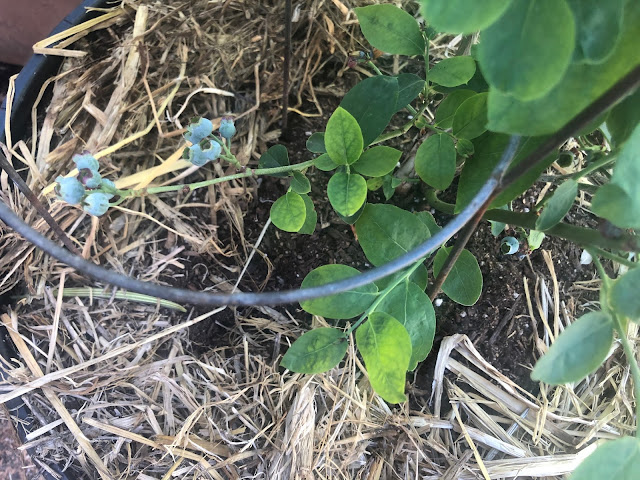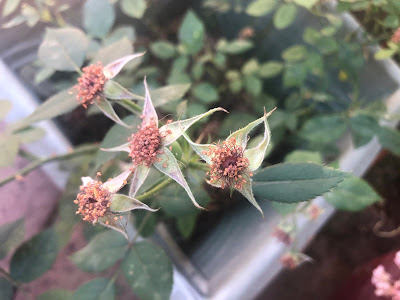
A morning inspection can catch growing problems

Early morning in May, time for Garden Patrol. Accompanied by four-legged Garden Supervisor Elsie T. Katt, I do a quick walk through my front and back gardens, making mental notes on what's happened to plants overnight. Already checked the weather report — it's going to be 91 today, down a bit from yesterday's 97, but still plenty warm.
Here's my morning checklist, generally by priority:
Wilting. In the morning, this is not a good sign. Many plants will temporarily wilt in the afternoon during high heat -- tomatoes and squash among them -- but recover overnight. Does the plant need water? If it was just watered yesterday, maybe it needs to be moved, or it's rootbound and needs a larger pot. Could this plant use (more) mulch? Maybe some shade cloth?
Drooping. Different from wilting, to me this means a heavy branch or a spindly seedling that needs thinning or some support now before it breaks.
Distorted or chewed leaves. Hmm, could be aphids or caterpillars. If the leaves didn't look like this yesterday, I can act fast and might be able to prevent a full-on pest attack. Water-spray prescribed for aphid removal, but check first for evidence of lady beetles or other aphid-eaters at work. If close inspection turns up evidence of "caterpillar poop," a light dusting of Bt ( bacillus thuringiensis ) might be in order.
Seedlings. Check to see if any sprouts are up where I've put in seeds -- basil, zinnias and sunflowers this week -- and also whether they're too close together, need a light spritz or maybe a few more seeds should be added. Are the sprouts noticed yesterday still doing OK? Have the birds discovered them? If so, time for some berry basket covers.
Yellow leaves. There are so many reasons for yellowing leaves: underwatering, overwatering, lack of nitrogen, insect attacks, various wilts, sunburn, and on and on. If there are one or two yellow leaves on an otherwise healthy, established plant, I put it on my mental "watch" list. But if it's a recently planted specimen, or the color change is dramatic, the plant goes straight to triage. By the way, this Plant Problem Diagnostic Tool from UC Integrated Pest Management is a terrific help in figuring out what's wrong.
Deadheading needed. It's not urgent, but a pleasant chore for the morning.
The roses are at that phase now. Time to clean them up and apply a bit of natural fertilizer. Lavender or rosemary might need some tidying up, too.

The Crazy Dottie rose could use some clean-up.
OK, crucial things dealt with, it's time for a coffee break. Ms. Katt and I will be back outside again later.
May is such an important time in the garden. Here's a post I wrote last May that is relevant still: "Mistakes Gardeners are Making Now They'll Pay for Later This Summer."
Comments
0 comments have been posted.Sacramento Digs Gardening to your inbox.
Sites We Like
Garden Checklist for week of July 21
Your garden needs you!
* Keep your vegetable garden watered, mulched and weeded. Water before 8 a.m. to reduce the chance of fungal infection and to conserve moisture.
* Feed vegetable plants bone meal, rock phosphate or other fertilizers high in phosphate to stimulate more blooms and fruiting. (But wait until daily high temperatures drop out of the 100s.)
* Don’t let tomatoes wilt or dry out completely. Give tomatoes a deep watering two to three times a week.
* Harvest vegetables promptly to encourage plants to produce more. Squash especially tends to grow rapidly in hot weather. Keep an eye on zucchini.
* Pinch back chrysanthemums for bushy plants and more flowers in September.
* Remove spent flowers from roses, daylilies and other bloomers as they finish flowering.
* Pinch off blooms from basil so the plant will grow more leaves.
* Cut back lavender after flowering to promote a second bloom.
* It's not too late to add a splash of color. Plant petunias, snapdragons, zinnias and marigolds.
* From seed, plant corn, pumpkins, radishes, winter squash and sunflowers.